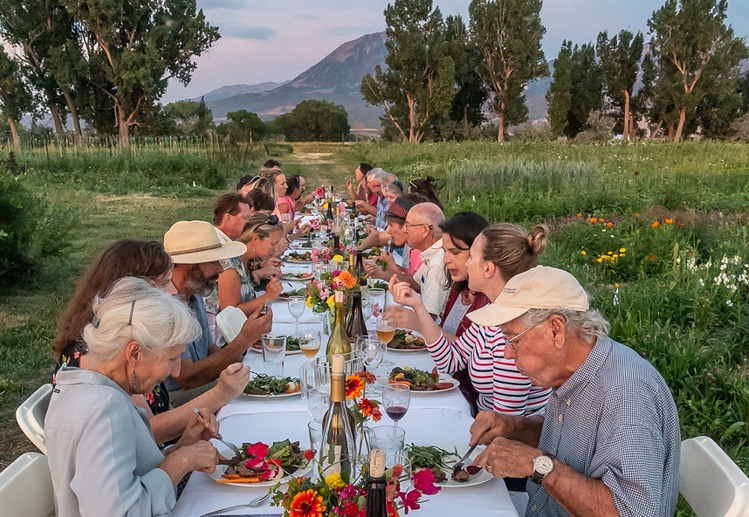Coloradans, and people around the world, are amassing plenty of practice in social distancing. When the tourism business resumes a semblance of normalcy in Colorado, a growing message could be tourism distancing.
That’s because tourism management leaders in the state are using the downtime to work on expanding, improving and formalizing sustainable tourism strategies, including efforts to spread travelers’ love of Colorado more evenly throughout the state.
“It is a great time to focus on sustainability and resilience-planning in tourism so that when people begin traveling again, we are all in a better place,” says Kim Langmaid, Ph.D., associate professor of sustainable studies at Colorado Mountain College.
Langmaid is a workshop leader for the nonprofit Global Sustainable Tourism Council, which establishes and manages global sustainable standards for public policy-makers, destination managers, hotels and tour operators. One goal of the GSTC workshops is for a resort destination to strive for the Mountain IDEAL, a standard which helps mountain towns balance tourism growth with local needs to protect nature and wildlife, improve the well-being of residents and preserve cultural heritage.
The Vail area earned Mountain IDEAL certification in 2018 and is currently undergoing recertification, Langmaid said.
Jessie Burley, Town of Breckenridge sustainability coordinator, says the greater Breckenridge area, including the ski resort, is working toward Mountain IDEAL certification by the end of 2020.
“We’ve hit the reset button, which would have been impossible in other situations,” Burley says of the virus-induced tourism hiatus. “Sustainability is a systems approach, and we have an opportunity to create new systems from this.”
Burley says travelers should seek out mountain resort communities that are putting money and resources into taking care of the environment, reducing waste production and improving housing options and living wages for the local workforce.
“We can make more conscious and value-based decisions on where we want to go and how we want to spend our money,” Burley says.

National surveys show an increasing number of Colorado visitors believe it is very important to choose a destination based on sustainable practices. Those figures rose from 15% in 2017, to 20% in 2018, to 27% in 2019, says Cathy Ritter, Colorado Tourism Office (CTO) director.
After listening to Colorado residents’ concerns, the CTO launched a multi-prong Destination Stewardship Plan in spring 2017 with three core objectives: disperse visitors, share Colorado sustainability ethics and create alliances to magnify the impact of sustainable tourism initiatives.
“One of the really important components of our destination stewardship plan is to disperse travelers to those less visited parts of the state,” Ritter says.
The state office created a searchable online database called Colo-Road Trips that suggests multi-day itineraries for less-traveled destinations to encourage travelers to “try out places in Colorado they never heard of before,” Ritter says. Searches include a “sustainability activity” with tips about responsible tourism or links to donate to causes ranging from Wild Horse Warriors in Moffat County to Trail 2000 in Durango. The CTO will add more “low environmental impact trip” options to the searchable website this year.
Lesser-known tourism destinations may need help to promote their assets responsibly, so the CTO funds a CRAFT program, or Colorado Rural Academy for Tourism. Grants range from $10,000 for destination-level training to $1,000 for organizations or tourism-related businesses. Locations participating in the extensive training in 2018 and 2019 included Huerfano, Grand and Moffat counties and the cities of Trinidad, La Junta and Alamosa.
Overnight tourism in Colorado accounted for $15.8 billion in spending in 2018, Ritter says, with 37.8 million overnight visitors. Of those overnight tourists in 2018, 38% arrived by airplane, a potent source of greenhouse gas emissions.
To reduce their impact, travelers can take positive personal steps by unplugging hotel room refrigerators, turning off air conditioning, carrying reusable eating and drinking supplies, utilizing public transit, or renting bicycles or electric vehicles. Tourists should search for greener lodging properties that participate in sustainability certification programs or offer connections to donate to environmental stewardship programs, Burley says.
In Eagle County, lodging properties and businesses can be certified as more sustainable through the Actively Green program run by nonprofit Walking Mountains Science Center, and travelers can support the Land & Rivers Fund.
In tourist-rich Summit County, businesses can participate in the Resource Wise program, which trains in reducing energy use, waste and carbon emissions.
Steamboat Springs, Aspen and Durango leaders promote Pledge for the Wild, a group of mountain towns supporting responsible tourism in wild places. For example, pledge donations in Steamboat Springs go toward a trail maintenance endowment fund.
Aspen/Pitkin County Airport offers The Good Traveler carbon offset program managed by nonprofit Rocky Mountain Institute headquartered in Basalt.
“There is a real opportunity now, as we invite people back to travel, that we join in setting new expectations for how to travel mindfully in regard to our natural environment,” Ritter says.
